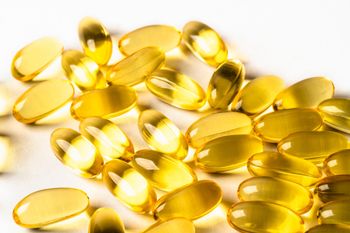
Aging Well
The baby boomer generation may be associated with cultural revolution and a redefinition of traditional values. However, as the oldest of this generation move through their sixties, most will face the same health concerns that have dogged several generations of their predecessors.
Originally Published
The baby boomer generation may be associated with cultural revolution and a redefinition of traditional values. However, as the oldest of this generation move through their sixties, most will face the same health concerns that have dogged several generations of their predecessors.
Traditional maladies such as cardiovascular disease, the leading cause of mortality in the United States for 97 of the last 100 years, are prevalent among boomers. In fact, cardiovascular disease already affects approximately 40% of 40- to 59-year-olds of both sexes, and a staggering 73% of 60- to 79-year-olds, according to recent figures from the American Heart Association.
Consistent with their history-changing cultural image, baby boomers will likely redefine the major health concerns of the golden years, adding obesity (between 34 and 40% of baby boomers have a Body Mass Index of more than 30 kg/m2), diabetes (13 to 14% of 55- to 64-year-olds, with another third or so being prediabetic), and Alzheimer's disease (which may be complicated by increased occurance of the former two conditions).
Thankfully, a growing body of evidence suggests that proper diet may have an impact on mitigating some of the risk of several of the boomers' health concerns. Certain nutrients-as natural components of the diet or at therapeutic levels as interventions-are of particular interest, as they show promise in addressing some of these conditions. A short list of these supplemental nutrients follows. The list is by no means comprehensive, but does include nutrients that have considerable data to support their efficacy, or nutrients that have produced encouraging results in their initial investigations.
Ubiquinol
Coenzyme Q10, or CoQ10, is a fat-soluble substance that is an essential component of the energy-production system in cells. In humans, CoQ10 is found in each cell in the body but is particularly concentrated in tissues which have large energy requirements, like the heart. There are also substantial amounts of CoQ10 in the blood, protecting circulating lipids (Low- and high-density lipoprotein, or LDL and HDL) from oxidative damage. In human metabolism, CoQ10 cycles between two forms: ubiquinone, also referred to as oxidized CoQ10; and ubiquinol, also called reduced CoQ10. Ubiquinone has been available as a supplement for some time, while ubiquinol is new to the supplement market.
Supplemental CoQ10 has been the subject of numerous studies over the last half century, particularly in applications for cardiovascular health (chronic heart failure, exercise-induced angina, hypertension, myocardial infarction). It may also be protective of the cardiovascular system in diabetics. CoQ10 continues to be the subject of academic research and is beginning to find acceptance as a supplement among mainstream medical practitioners.
The absorption of dietary CoQ10 can be quite poor. Variability in absorption also appears to be age-dependent. Case reports suggest decreased fractional absorption in older patients. One advantage of ubiquinol is its innate ability to be absorbed more efficiently than ubiquinone, especially in individuals who have difficulty absorbing CoQ10.
Omega-3 Fatty Acids
They're ubiquitous in the supplement aisle, the subject of thousands of studies, and now available by prescription. The long-chain polyunsaturated fatty acids from fish oil, omega-3 fatty acids, have well-established roles in human nutrition, both as building blocks for the cell membranes of the brain and as precursors to the human body's own natural antiinflammatory system.
While the principle fish oil omega-3 fatty acids, eicosapentaenoic acid (EPA) and docosahexaenoic acid (DHA), are not considered essential to human nutrition, there is evidence that some people may have trouble synthesizing sufficient levels on their own. Fish intake has been associated with a reduced risk of heart disease. It may help maintain healthy levels of circulating cholesterol and triglycerides, and may help maintain healthy heartbeat and blood pressure.
One particularly promising source of omega-3 fatty acids to watch is krill oil, which is a potentially more bioavailable form (phospholipids) and contains high levels of the fat-soluble antioxidant astaxanthin. Initial studies of krill oil suggest it may have a more potent lipid-lowering effect than other cold-water fish oils.
Hyaluronic Acid (HA)
HA, a type of structural polysaccharide, soaks up water like a molecular sponge, which gives it a useful role in the human body for holding moisture, such as in the skin, or as a lubricant, such as in the synovial fluid of joint capsules.
Large polymers of HA are present in healthy joints. These tend to break down as we age and compromise the lubricating capacity of the synovial fluid. HA treatments have been classically performed by direct injection into the joint, and have been shown to reduce joint pain-and sometimes, restore joint function. Recent evidence suggests that HA can also be effective as an oral supplement, both for joint health (large-molecular-weight HA) and for increasing skin hydration (low-molecular-weight HA).
Choline
Choline, usually grouped among the B-complex vitamins, is an essential nutrient in human nutrition that is used for the construction of both cell membranes (phosphatidylcholine) and the neurotransmitter acetylcholine. Cytidine 5-diphosphocholine (CDP-choline) and alpha-Glycerylphosphorylcholine (aGPC) are supplemental choline derivatives that have demonstrated particular efficacy as nootropic, or cognition-enhancing, agents, particularly in individuals with cognitive impairments or central nervous system injury.
Silicon
An important, albeit unfamiliar, nutrient with a crucial role in the maintenance of healthy skin, bones, and arteries is silicon. Silicon-not to be confused with silicone, the man-made plastic-is an essential trace element in human nutrition. It is required for some of the countless chemical reactions that create and maintain the extracellular matrix, the connective tissue that holds together various organ systems. Humans need very little for proper health. Indeed, an average person has only about 1 g of silicon in their body.
Silicon can be found in several food sources-particularly, mineral waters and unprocessed grains, but also to some extent in fruits, vegetables, meats, and fish, as well as in dietary supplements. For humans to absorb and use silicon as a nutrient, we must break down dietary silica into individual silicon units called orthosilicic acid, or OSA, which is also available as a supplement. This silica-OSA breakdown process can become less efficient as we age, making orthosilicic acid the preferred dietary silicon source in older individuals.
Silicon has been shown to be of particular importance to the formation of collagen, the most predominant structural protein in the human body. Human studies of silicon supplementation have shown particular benefit to collagen-rich tissues (helping bones to mineralize, reducing microwrinkles in photodamaged skin), and is associated with reduced risk of arterial damage when present in adequate levels in the diet. OSA may also help to detoxify the brain from aluminum.
Vitamin K2
While it may be familiar as a necessary nutrient in the blood-clotting cascade, vitamin K is also an important cofactor in the synthesis of certain proteins of the bone matrix. These proteins-osteocalcin and matrix gla protein-are thought to be responsible for the organization of calcium into the bone matrix.
Low dietary vitamin K levels have been associated with increased osteoporotic fracture risk in observational studies, while supplementation studies have demonstrated increases in markers of bone formation. Additionally, vitamin K has a role in reducing the calcification of arteries.
Vitamin K appears in two different forms in the diet; vitamin K1 (phylloquinone; found in leafy green vegetables) and K2 (menaquinone; found in meat as menaquinone-4 or in fermented foods as menaquinones 7,8,9). Vitamin K2 (particularly MK-7) may have a longer half-life in the body and a wider range of activity than K1, and has been the subject of many of the vitamin K intervention studies.
Sulforaphane
Sulforaphane is a highly reactive compound (isothiocyanate) found in cruciferous vegetables. It is particularly concentrated in broccoli sprouts. Epidemiological studies have suggested that cruciferous vegetable intake may lower cancer risk, particularly colon and prostate cancers. Sulforaphane appears to have a role in this risk reduction.
Hundreds of studies in the last decade have implicated sulforaphane's role as a chemoprotective agent, acting at several levels: inhibition of free radicals, induction of detoxification enzymes, blocking of enzymes involved in carcinogen activation, inducing apoptosis (death) of cancer cells, and activating cellular defenses against tumor growth. Although human data is limited-albeit promising and rapidly growing-considerable academic interest in the compound implicates sulforaphane as a nutrient to watch in the coming years. Sulforaphane is currently available in a concentrated supplemental form.
Kevin Connolly, PhD, (University of California, Los Angeles), is a Jarrow Formulas consultant. Previously, he spent five years as the director of scientific affairs and product development at Jarrow Formulas. Additionally, he spent 15 years in basic biochemistry research elucidating such diverse mechanisms as bacterial antibiotic resistance and collagen synthesis. He is an inventor on several medical device patents and is a frequent guest on radio health programs throughout the country.
Newsletter
From ingredient science to consumer trends, get the intel you need to stay competitive in the nutrition space—subscribe now to Nutritional Outlook.





